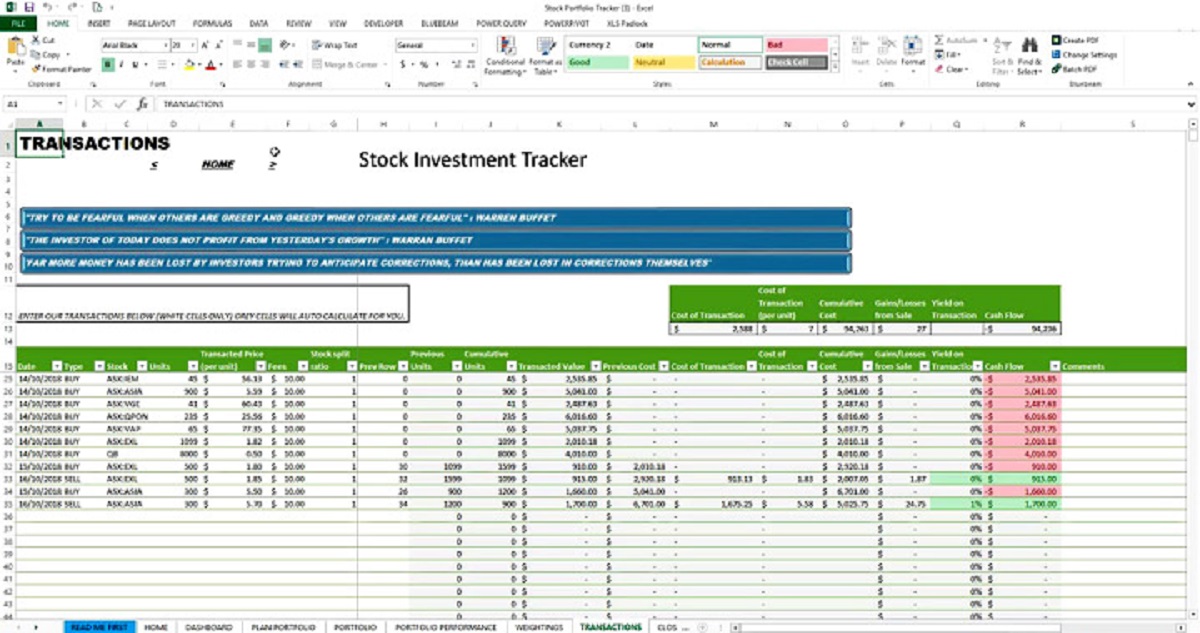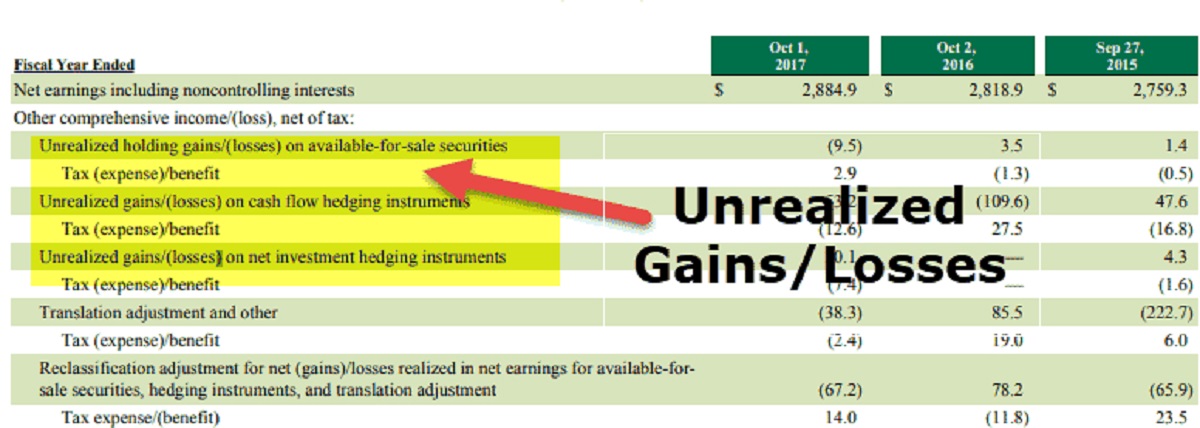Introduction
Return on Investment, commonly known as ROI, is a crucial metric used by businesses to evaluate the profitability and effectiveness of their investments. It helps assess how well an investment has performed over a specific period and provides insights into its financial viability.
ROI is a fundamental concept in finance and is widely used by investors, business owners, and analysts to make informed investment decisions. It serves as a valuable tool for measuring the success of various initiatives, such as marketing campaigns, product launches, and business expansion.
Understanding how to calculate ROI and interpret its results is essential for individuals and organizations alike. By evaluating the return on investments accurately, businesses can determine the financial gains or losses associated with their investments and allocate resources more efficiently.
In this article, we will delve into the concept of ROI and explore its significance in decision making. We will also guide you through the process of calculating ROI step-by-step and discuss the key factors to consider when analyzing ROI. Lastly, we will highlight the benefits of using ROI for decision making, as well as its limitations. By the end of this article, you will have a comprehensive understanding of ROI and its role in assessing the profitability of investments.
What is Return on Investment (ROI)?
Return on Investment (ROI) is a financial metric used to determine the profitability and efficiency of an investment by comparing the net profit generated to the cost of the investment. It measures how much return, in percentage terms, an investment has generated relative to its cost.
ROI is expressed as a ratio or percentage and provides valuable insights into the financial performance of an investment. It allows investors and businesses to assess the success and viability of different investment opportunities and prioritize where to allocate their resources.
At its core, ROI measures the return received on an investment relative to the investment’s cost. It takes into account both the gains and the costs associated with the investment. By comparing the net profit to the investment cost, ROI helps in assessing the profitability and efficiency of the investment.
ROI is a versatile metric that can be applied to various types of investments, such as stocks, bonds, real estate, marketing campaigns, research and development projects, and more. It enables investors and businesses to compare the returns of different investment options and make informed decisions based on their financial goals and risk tolerance.
It’s important to note that ROI is a relative measure, meaning it provides insight into the performance of an investment relative to its cost. A positive ROI indicates that the investment has generated a profit, while a negative ROI signifies a loss. Higher ROI values indicate greater profitability.
In summary, ROI is a financial metric that allows individuals and businesses to evaluate the profitability and efficiency of their investments. It helps in comparing different investment options, optimizing resource allocation, and making informed decisions based on financial performance.
Why is ROI Important?
Return on Investment (ROI) is a fundamental concept in finance and holds significant importance for investors, businesses, and decision-makers. Here are some key reasons why ROI is important:
1. Measure of Profitability: ROI provides a clear and objective measure of the profitability of an investment. It helps investors and businesses determine whether their investments are generating adequate returns and whether they are worth pursuing.
2. Evaluating Investment Options: ROI allows for a comparison between different investment opportunities. By calculating the ROI of multiple investment options, investors can make informed decisions on which projects or assets to invest in based on their potential returns.
3. Resource Allocation: ROI assists in optimizing resource allocation. By analyzing the ROI of various investments, businesses can identify the most profitable avenues and allocate their resources, such as capital and human resources, accordingly.
4. Performance Monitoring: ROI serves as a performance indicator, enabling businesses to monitor the success of their investments over time. By periodically analyzing ROI, companies can assess whether their investments are meeting their financial objectives and make necessary adjustments if needed.
5. Decision Making: ROI plays a crucial role in decision-making processes. Whether it’s choosing between different marketing campaigns, evaluating new product launches, or considering potential acquisitions, ROI helps decision-makers assess the potential financial impact and make informed choices.
6. Risk Assessment: ROI also helps in assessing the risk associated with an investment. By considering the potential returns against the investment cost, businesses can evaluate the risk-reward tradeoff and make decisions with a better understanding of the financial implications.
7. Financial Planning: ROI is a valuable tool for financial planning. By projecting potential returns and analyzing historical ROI data, businesses can estimate future cash flows, set realistic financial goals, and make informed strategic plans.
Overall, ROI is important because it provides a standardized and quantitative measure of profitability, supports decision-making processes, facilitates resource allocation, and helps in assessing the financial performance and risk of investments.
How to Calculate ROI
Calculating Return on Investment (ROI) involves a straightforward formula that allows investors and businesses to assess the financial performance of their investments. Here is a step-by-step process to calculate ROI:
Step 1: Determine Investment Cost: Start by determining the total cost of the investment. This includes all expenses associated with acquiring the asset or undertaking the project, such as purchase costs, renovation expenses, marketing expenses, and any other relevant costs.
Step 2: Calculate Net Profit: Determine the net profit generated by the investment. This involves subtracting the total costs, including ongoing expenses and taxes, from the total revenue generated by the investment during a specified period. Net profit is a measure of the financial gains or losses from the investment.
Step 3: Divide Net Profit by Investment Cost: Divide the net profit (Step 2) by the investment cost (Step 1). This will give you the return on investment in decimal form.
Step 4: Multiply by 100 to Get the Percentage: Multiply the result from Step 3 by 100 to convert the ROI into a percentage. This will give you the ROI percentage, representing the return on the investment relative to its cost.
Here is the formula for calculating ROI:
ROI = (Net Profit / Investment Cost) * 100
It’s important to note that the timeframe used for calculating ROI should be consistent with the specific investment being analyzed. Some investments may have short-term ROI calculations, while others may have long-term calculations.
Additionally, keep in mind that ROI is a single metric and may not capture the entire financial picture. It’s crucial to consider other factors such as cash flow, risk, and potential future returns when evaluating the overall financial performance of an investment.
By following this step-by-step process and using the ROI formula, investors and businesses can gain valuable insights into the financial viability and success of their investments.
Step 1: Determine Investment Cost
In order to calculate Return on Investment (ROI), the first step is to determine the total investment cost. The investment cost includes all the expenses associated with acquiring and setting up the investment.
The investment cost may vary depending on the nature of the investment. Here are some common components to consider when determining the investment cost:
Purchase Price: If the investment involves purchasing an asset, such as real estate, stocks, or a business, the purchase price is a significant part of the investment cost. This includes the cost of acquiring the asset, including any associated fees or commissions.
Transaction Costs: Transaction costs include any additional expenses incurred during the acquisition process, such as legal fees, appraisal fees, or broker fees. These costs are important to include in the total investment cost, as they directly impact the overall affordability and profitability of the investment.
Renovation and Improvement Costs: For certain types of investments, such as real estate or businesses, renovation or improvement costs may be necessary to enhance the value or functionality of the asset. These costs should be included in the investment cost, as they are essential to the overall investment calculation.
Operating Expenses: In addition to the initial setup costs, ongoing operating expenses should be considered when determining the investment cost. These expenses may include maintenance costs, utilities, insurance, employee salaries, and any other recurring costs associated with the investment.
Other Costs: Depending on the specific investment, there may be other costs to consider. For instance, if the investment involves a marketing campaign or research and development project, the associated costs should be factored into the overall investment cost.
It is crucial to accurately determine all the costs involved to get an accurate representation of the investment cost. Keeping comprehensive records and consulting with financial professionals can help ensure that no expenses are overlooked.
By properly identifying and quantifying the investment cost in Step 1, investors and businesses can move forward with the ROI calculation and gain a clear understanding of the financial impact of their investments.
Step 2: Calculate Net Profit
Calculating the net profit is the second step in determining the Return on Investment (ROI). Net profit represents the total earnings generated by the investment, after deducting all expenses associated with its operation.
To calculate the net profit, follow these steps:
1. Determine Total Revenue: Start by determining the total revenue generated by the investment during a specific period. This includes all the income generated from the investment, such as sales revenue, rental income, interest income, or any other forms of revenue.
2. Subtract Operating Expenses: Next, subtract the operating expenses incurred during the same period from the total revenue. Operating expenses are the costs necessary to keep the investment functioning and can include items such as maintenance costs, employee salaries, utilities, and insurance.
3. Consider Depreciation and Amortization: If the investment involves tangible assets, such as equipment or property, it is important to account for gradual value loss. This can be done by including depreciation and amortization in the expense calculation. These non-cash expenses represent the reduction in the value of the asset over time.
4. Deduct Taxes: Subtract any applicable taxes from the total revenue after deducting operating expenses and depreciation or amortization. Taxes may include income taxes, property taxes, or any other tax obligations associated with the investment.
After following these steps, the resulting figure will be the net profit generated by the investment during the specified period.
It’s crucial to ensure that all relevant expenses are considered in the calculation of net profit. By accurately determining the net profit, investors and businesses can assess the actual financial gains or losses from the investment, which is a key component in calculating ROI.
Keep in mind that the timeframe used for calculating net profit should be consistent with the timeframe used to determine the investment cost in Step 1. This ensures that the net profit calculation accurately represents the financial performance of the investment.
Step 3: Divide Net Profit by Investment Cost
Step 3 of calculating Return on Investment (ROI) involves dividing the net profit generated by the investment by the investment cost. This step allows us to determine the profitability of the investment in relation to its initial cost.
Follow these steps to divide net profit by investment cost:
1. Take the Net Profit: Use the net profit figure obtained from Step 2 of the ROI calculation.
2. Determine the Investment Cost: Use the total investment cost determined in Step 1 of the ROI calculation.
3. Divide Net Profit by Investment Cost: Divide the net profit obtained in Step 2 by the investment cost determined in Step 1. The resulting figure represents the return on investment as a decimal value.
It can be expressed using the formula:
ROI = Net Profit / Investment Cost
The result obtained from this step is the return on investment ratio. This ratio indicates how much profit was generated for every unit of investment. For example, an ROI of 0.75 means that there was a return of $0.75 for every dollar invested.
Deciding to invest in an opportunity with a higher ROI is generally preferred, as it implies a more profitable investment relative to the cost. However, it’s important to consider other factors, such as risk and potential future returns, alongside the ROI figure when making investment decisions.
By dividing the net profit by the investment cost in Step 3, investors and businesses gain a clear understanding of the profitability of their investments. The resulting ROI figure can be used to compare different investment options or assess the financial performance of a specific investment.
Step 4: Multiply by 100 to Get the Percentage
In the final step of calculating Return on Investment (ROI), we multiply the result obtained from Step 3 by 100 to convert it into a percentage. This step allows us to easily interpret and compare ROI values across different investments.
Here’s how to multiply by 100 to get the percentage:
1. Obtain the ROI Ratio: Use the ROI ratio obtained from Step 3 of the ROI calculation.
2. Multiply by 100: Multiply the ROI ratio by 100 to convert it into a percentage. This effectively scales up the ratio to a meaningful and easily understandable figure.
The resulting figure represents the Return on Investment (ROI) as a percentage. For example, an ROI of 0.75, when multiplied by 100, becomes 75%. This indicates that the investment has yielded a return of 75% relative to its cost.
Converting the ROI ratio into a percentage makes it easier to compare investment returns across different projects or assets. It also allows us to quickly evaluate the potential profitability of the investment.
It’s important to note that ROI percentages are typically used for relative comparisons rather than absolute assessments. Higher ROI percentages generally indicate more profitable investments, while lower percentages suggest less favorable returns.
Remember that ROI is just one metric and should not be considered in isolation. It’s essential to consider other factors such as risk, cash flow, and the potential for future growth when evaluating the overall financial implications of an investment.
By multiplying the ROI ratio by 100 in Step 4, investors and businesses can express the ROI value as a percentage, making it more accessible for analysis, comparison, and decision-making purposes.
Example Calculation
Let’s walk through an example to illustrate how the Return on Investment (ROI) calculation works in practice:
Suppose you invested $10,000 in a marketing campaign for your business, and the campaign generated $15,000 in revenue. To calculate the ROI, follow these steps:
Step 1: Determine Investment Cost: The investment cost is $10,000, as this is the initial amount invested in the marketing campaign.
Step 2: Calculate Net Profit: The net profit is determined by subtracting the investment cost from the revenue generated. In this case, the net profit is $15,000 – $10,000 = $5,000.
Step 3: Divide Net Profit by Investment Cost: Divide the net profit of $5,000 by the investment cost of $10,000: $5,000 / $10,000 = 0.5.
Step 4: Multiply by 100 to Get the Percentage: Multiply the result from Step 3 by 100 to convert it into a percentage: 0.5 * 100 = 50%.
The ROI for this marketing campaign is 50%. This means that for every dollar invested, you received a return of $0.50 or 50 cents.
Interpreting the ROI percentage, we can conclude that the marketing campaign was profitable, generating a return that is 50% of the investment cost. However, it is important to consider other factors, such as the duration of the campaign, ongoing expenses, and potential future returns, to gain a comprehensive understanding of the campaign’s overall financial performance.
By using a realistic example and following the steps of the ROI calculation, we can see how ROI provides a valuable metric for assessing the profitability and success of an investment.
Factors to Consider When Analyzing ROI
When analyzing Return on Investment (ROI), it is important to consider various factors to gain a comprehensive understanding of the investment’s financial performance. Here are some key factors to consider:
1. Timeframe: The timeframe used to calculate ROI is crucial. Short-term ROI may provide a snapshot of immediate returns, while long-term ROI may reflect the investment’s overall profitability over an extended period. Consider the appropriate timeframe based on the nature of the investment and its expected returns.
2. Opportunity Cost: Evaluate the potential returns from alternative investment options. Comparing the ROI of different investments helps in identifying the most attractive opportunities and maximizing returns.
3. Risk: Assess the risk associated with the investment. Higher returns often come with higher risks. Consider the investment’s volatility, market conditions, and potential for losses when interpreting ROI figures.
4. Cash Flow: Analyze the cash flow generated by the investment. ROI focuses on the profitability, but positive cash flows are essential for sustainability and liquidity.
5. Future Returns: Take into account the potential for future returns. Investments with lower short-term ROI may have higher growth potential, while those with high short-term ROI may reach a saturation point. Consider long-term prospects and reinvestment opportunities.
6. Expenses: Evaluate the accuracy and inclusiveness of incorporated expenses. Ensure all costs associated with the investment, such as operating expenses, taxes, and depreciation, are appropriately accounted for to reflect the true profitability.
7. Consideration of Intangible Benefits: ROI calculations primarily focus on financial gains. However, consider intangible benefits such as improved brand reputation, enhanced customer satisfaction, or increased market share, which may not be captured in the ROI calculation but still contribute to the overall value of the investment.
8. Industry and Market Factors: Assess industry-specific factors and market conditions. Factors such as competition, regulatory changes, technological advancements, and economic fluctuations can impact the ROI of an investment.
9. Goal Alignment: Evaluate whether the achieved ROI aligns with the initial investment goals. Reflect on the investment’s intended purpose and assess if the return meets expectations and supports strategic objectives.
By considering these factors when analyzing ROI, investors and businesses can make more informed decisions, gain a holistic view of the investment’s financial performance, and maximize their return potential.
The Benefits of Using ROI for Decision Making
Return on Investment (ROI) is a powerful tool for decision making as it provides many benefits for investors, businesses, and decision-makers. Here are some key benefits of using ROI in the decision-making process:
1. Objective Comparison: ROI allows for objective comparisons between different investment opportunities. By calculating and analyzing the ROI of various options, decision-makers can objectively assess their financial viability and prioritize investments based on their potential returns.
2. Financial Performance Evaluation: ROI provides a tangible measure of the financial performance of an investment. It helps investors and businesses evaluate the profitability and efficiency of their investments, allowing them to identify successful ventures and make informed decisions for future investments.
3. Resource Allocation Optimization: ROI assists in optimizing resource allocation. By analyzing the ROI of different projects or initiatives, businesses can determine where to allocate their resources, such as budget, time, and manpower, for maximum efficiency and profitability.
4. Risk Assessment: ROI aids in assessing the risk associated with an investment. It provides insight into the potential return relative to the investment cost, enabling decision-makers to evaluate risk-reward tradeoffs and make calculated investment choices.
5. Justification of Investments: ROI helps justify investments to stakeholders. By providing a clear measure of the financial gains or losses, ROI calculations can support the decision-making process and provide evidence for the expected returns on investment.
6. Strategic Planning: ROI is a valuable tool for strategic planning. It allows businesses to set realistic financial goals, evaluate the feasibility of projects, and determine the best course of action based on the expected returns and potential risks.
7. Performance Monitoring: ROI serves as a performance indicator, enabling businesses to monitor the success of their investments over time. By regularly calculating and tracking ROI, decision-makers can assess whether investments are meeting their financial objectives and make adjustments if necessary.
8. Data-Driven Decision Making: ROI provides data that supports decision making. By relying on quantitative analysis of ROI figures, decision-makers can make strategic choices based on concrete financial metrics rather than subjective opinions or assumptions.
By leveraging the benefits of using ROI in decision making, investors and businesses can make informed choices, optimize resource allocation, assess risk, and align their investments with their overall financial goals and strategies.
Limitations of ROI
While Return on Investment (ROI) is a valuable metric for assessing the financial performance of investments, it is important to recognize its limitations. Understanding these limitations is essential to ensure that ROI is used appropriately and in conjunction with other relevant factors. Here are some key limitations to consider:
1. Narrow Focus: ROI focuses solely on the financial aspect of an investment and doesn’t take into account other non-financial factors, such as social impact, customer satisfaction, or environmental sustainability. As a result, ROI may not provide a comprehensive view of an investment’s overall value.
2. Time Constraints: ROI calculations are limited by the timeframe used. Short-term ROI calculations may not reflect the long-term profitability of an investment. Additionally, ROI doesn’t consider the timing or pattern of cash flows, which can impact the investment’s overall financial performance.
3. Difficulty in Measuring Intangibles: ROI calculations do not capture intangible benefits or costs that are difficult to measure, such as brand recognition, employee morale, or customer loyalty. These intangible factors can significantly impact the overall value of an investment but are not reflected in ROI calculations.
4. Incomplete Cost Consideration: ROI calculations may not capture all costs associated with an investment. It’s important to ensure that all relevant expenses, including indirect costs, ongoing maintenance, and potential risks, are adequately considered to paint a more accurate picture of the investment’s profitability.
5. Variation Across Industries: Different industries have varying profit margins, operating cycles, and risk levels. Comparing ROI across industries may not provide an accurate basis for analysis, as industry-specific factors can significantly influence ROI figures and investment performance.
6. Lack of Forward-Looking Perspective: ROI is a backward-looking metric that assesses historical investment performance. It doesn’t account for future market trends, competitive landscape shifts, or changes in consumer behavior. To make well-informed decisions, it’s important to supplement ROI analysis with forward-looking insights.
7. Ignoring Opportunity Cost: ROI calculations often do not consider alternative investment opportunities or the potential returns they could offer. Failure to account for opportunity cost may lead to suboptimal investment decisions.
8. Lack of Sensitivity to Scale: ROI calculations may not accurately reflect the scalability of an investment. As the scale increases, costs and revenues may change, impacting the ROI figure. It’s important to consider scalability factors when interpreting ROI results.
Despite these limitations, ROI remains a widely used and valuable metric for assessing the financial performance of investments. Recognizing the limitations and supplementing ROI analysis with additional information can help decision-makers make more comprehensive and informed investment choices.
Conclusion
Return on Investment (ROI) is a powerful tool for evaluating the financial performance of investments. It provides a standardized and quantifiable measure that allows investors, businesses, and decision-makers to assess the profitability and efficiency of their investments. By calculating ROI and considering other relevant factors, individuals can make informed decisions regarding resource allocation, investment prioritization, and strategic planning.
While ROI offers many benefits, it is essential to recognize its limitations. ROI calculations focus primarily on financial gains and may overlook intangible factors and non-financial impacts. Moreover, ROI has constraints in terms of time, cost considerations, industry variations, and forward-looking perspectives. Thus, supplementing ROI analysis with additional information and considering a broader range of factors is crucial to making comprehensive investment decisions.
When working with ROI, it is important to approach it as part of a larger decision-making process. Consider the context, goals, and risks associated with the investment. Evaluate qualitative factors, such as customer satisfaction, brand reputation, and market trends, alongside quantitative measures like cash flow and profitability. By taking a holistic approach to decision making, individuals can gain a more comprehensive understanding of the potential benefits and risks of an investment.
In conclusion, ROI is a valuable tool that provides insights into the financial performance of investments. By understanding how to calculate ROI and considering its limitations, individuals can make informed decisions, allocate resources effectively, and evaluate investment opportunities with a balanced perspective.

























